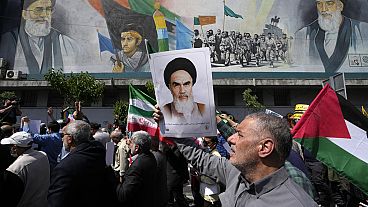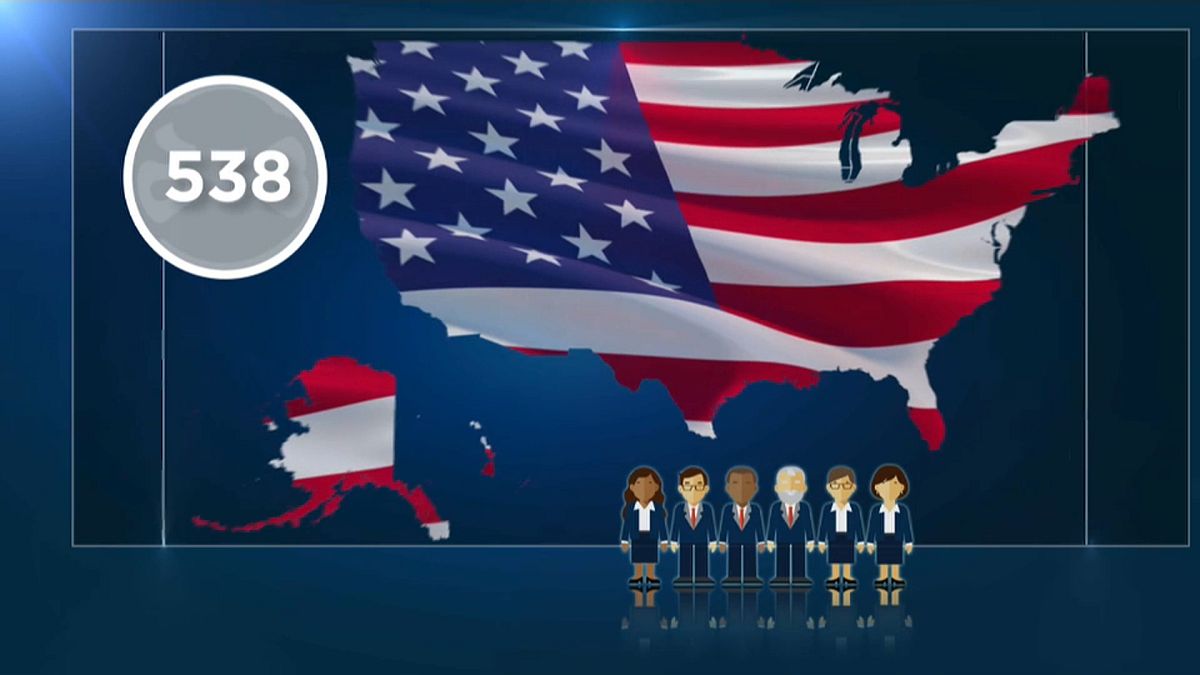The most popular US presidential candidate could end up losing the election. Here is why.
Whether it's Donald Trump or his challenger Joe Biden, the most popular presidential candidate could actually end up losing.
That's because — unlike many other countries — presidential elections in the US are not decided by who wins the most votes.
Instead, electoral colleges in individual states determine the outcome in a controversial, winner-takes-all system.
What is the electoral college and how does it work?
An electoral college is a group of people — electors — who represent each of the US' 50 states and vote for a president.
Each state is assigned a number of electors based on their population. California, for example, has 55, while Wyoming has three.
Electors will typically back whichever candidate wins the most votes in their state.
So whoever wins the popular vote in California will get 55 electoral college votes to add to his or her tally.
In order to win, a presidential candidate needs 270 or more electoral college votes.
In total there are 538 electors, which corresponds to the number of US representatives (435) plus the number of US Senators (100) plus three additional electors for the capital city Washington DC.
Swing states
Since there are only two main political parties in the United States, the left-leaning Democratic Party and the conservative Republican Party.
Most states consistently vote one way or the other. This leaves just a handful of swing states where the vote can go either way. Candidates tend to focus the majority of their campaigning on these key areas.
There are typically just six or seven of them in any given election year and many are considered battlegrounds.
Those states in 2020 include Pennsylvania, Michigan, Wisconsin, Florida, Iowa and Ohio, among others. States that have typically voted Republican, such as Arizona, North Carolina (which went narrowly for Obama in 2008), and Georgia, are also considered to be potential battlegrounds this year.
What's the controversy?
The electoral college gives "small states much more power in selecting the president than their population warrants compared to large states," said Redlawsk.
For instance, California has 55 electoral votes against Wyoming's three even though the population of former is roughly 68 times that of the latter.
Additionally, all but two states award electoral votes in a "winner-takes-all" format, which means that "anybody who votes for the candidate who doesn't win the state is essentially unrepresented," said Redlawsk.
That's why you can win the popular vote but lose the election, something that occurred in 2000 when George W. Bush received 271 electoral votes yet Al Gore got 500,000 more votes nationally.
Then in 2016, Donald Trump triumphed with 304 electoral votes even though Hillary Clinton won nearly three million more votes.
Despite being unpopular among American voters, however, the system is unlikely to change because Congress would have to amend the Constitution.
Two-thirds of both chambers of Congress would have to agree for that to happen.
How did the electoral college system come about?
When the US founders wrote the Constitution in 1787, they debated how to select the president and vice president of the United States.
The founders were concerned, after fighting a war against the British monarchy, that the executive could end up with too much power.
Historians say that the founders were also distrustful of direct democracy and others were concerned about balancing the interests of the individual states.
"Some people wanted Congress to select the president. Others wanted it to be independent of Congress. The Constitutional Convention was near the end, the delegates were tired. They ultimately came up with a compromise that meant that the states elected the president, not Congress," said David Redlawsk, a professor of political science at the University of Delaware.
Many historians say that the system also finds its roots in the slave trade.
A convention compromise allowed Southern states to add three-fifths of their expansive slave population to their total population to get more electoral votes and seats in Congress.
The electoral college was amended after a contested election in 1800 that saw the House of Representatives decide a tie between presidential candidate Thomas Jefferson and vice-presidential candidate Aaron Burr.
The 12th amendment to the constitution, ratified in 1804, built the system that’s used today where electors vote for president and vice president, so multiple candidates cannot win a majority of presidential electoral votes.
“It wasn’t really carefully thought out and it was done in a time before there were political parties, and it was done at a time before there were political parties so nobody foresaw what would happen with political parties and the electoral college,” explains Redlawsk.


